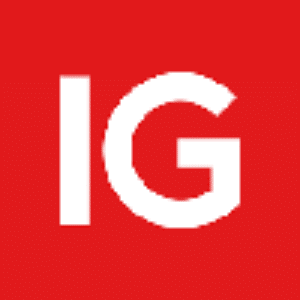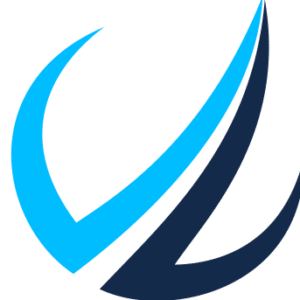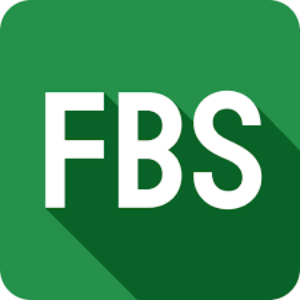
Forex trading has gained popularity in the Philippines, attracting both new and seasoned traders. Understanding how to choose the right Forex broker is crucial for anyone looking to succeed in this dynamic market. With many options available, finding the best Forex broker in the Philippines can make a significant difference in your trading journey.
Selecting a broker that fits your trading style and offers the right tools is vital. In this blog post, I’ll explore the features that Filipino traders need to look for, including account options, trading platforms, and the range of instruments. I’ll also share insights into the associated costs and risks, ensuring that you make informed decisions as you navigate the Forex market.
As you read on, I aim to equip you with essential knowledge about trading Forex in the Philippines, from the basics to advanced strategies. By understanding what to prioritize when choosing a broker, you can optimize your trading experience for success.
| Broker | Min. Deposit | Platforms | Key Features | Best For |
|---|---|---|---|---|
| Exness | $0 | MetaTrader 4, MetaTrader 5, Exness Terminal |
Competitive Fees
Unrestricted Leverage
Regulated by Financial Services Authority of Seychelles
|
Best Overall for traders of all levels |
| IG | $50 | IG Web, MetaTrader 4, FIX API |
Advanced Tools
Extensive Market Access
Regulated by Bermuda Monetary Authority (est. 1976)
|
Professional traders requiring advanced toolsets |
| Fusion Markets | $0 | TradingView, MetaTrader 4, MetaTrader 5 |
Low-Cost Trading
24/7 Support
Regulated by Australian Securities and Investment Commission
|
Budget-conscious traders |
| AvaTrade | $100 | MetaTrader 4, AvaTradeGo |
Educational Resources
Reliable Support
Multi-regulated: ASIC, Central Bank of Ireland (est. 2006)
|
Beginners needing educational support |
| FP Markets | $100 | MetaTrader 4, MetaTrader 5, Iress |
ECN Trading
Competitive Pricing
Regulated by ASIC and CySEC
|
Low-cost trading with educational focus |
Understanding Forex Trading in the Philippines

Forex trading is an important financial activity in the Philippines. It involves buying and selling currencies in the forex market. Understanding the basics and regulations surrounding this market is crucial for anyone looking to participate.
Basics of Forex and Forex Markets
Forex, or foreign exchange, refers to the global marketplace where currencies are traded. It operates 24 hours a day, allowing traders to engage at any time. The forex market is highly liquid, meaning that large volumes of currencies can be traded without causing significant price changes.
Filipino traders often use platforms like MetaTrader 4 and MetaTrader 5 to execute trades. These platforms offer user-friendly interfaces and numerous tools that assist in technical analysis. Traders can develop various trading strategies, such as day trading or swing trading, based on market movements.
Success in forex trading requires knowledge of market trends and price fluctuations, as well as understanding how geopolitical events can affect currency values.
Regulation and the Securities and Exchange Commission
In the Philippines, the regulation of forex trading is primarily governed by the Securities and Exchange Commission (SEC) and the Bangko Sentral ng Pilipinas (BSP). These institutions ensure that brokers operate fairly and transparently.
Currently, there are no SEC-regulated brokers that exclusively offer forex trading. Many Filipino traders choose to work with international brokers. It is important to ensure that these brokers are regulated by recognized authorities, such as the Financial Conduct Authority in the UK or the U.S. Securities and Exchange Commission.
Traders should evaluate brokers carefully to understand their fees, trading conditions, and customer support. Ensuring that the chosen broker adheres to these regulations can help protect investments and enhance the trading experience.
5 Best Forex Brokers in the Philippines
Exness
Exness stands out as the best overall broker for traders in the Philippines, thanks to its $0 minimum deposit, which enhances its accessibility for traders at all levels. It is regulated by the Financial Services Authority of Seychelles and offers both MetaTrader platforms and its own Exness Terminal. The broker is known for its competitive fees and unrestricted leverage options, although it lacks some advanced order types, which may deter more seasoned traders.
IG
IG caters to professional traders with its comprehensive toolset and extensive market access. It was established in 1976 and is regulated by the Bermuda Monetary Authority. IG requires a $50 minimum deposit and supports a variety of platforms, including IG Web and MT4. While it offers FIX API for direct market access and advanced analytical tools, the absence of a localized Philippine website may be a drawback for some traders.
Fusion Markets
Fusion Markets appeals to budget-conscious traders with its zero minimum deposit and low-cost trading approach. Regulated by the Australian Securities and Investment Commission, it supports popular platforms such as TradingView, MetaTrader 4, and MetaTrader 5. The broker is known for offering flexible account types and 24/7 customer support, making it a favorable option for both novice and experienced traders seeking economical trading solutions.
AvaTrade
Founded in 2006, AvaTrade is regulated by multiple authoritative bodies, including ASIC and the Central Bank of Ireland, making it ideal for beginners. With a $100 minimum deposit, it provides a variety of trading platforms like MetaTrader 4 and AvaTradeGo. AvaTrade is particularly noted for its extensive educational resources and reliable customer support, although it offers limited commodity trading options.
FP Markets
FP Markets is recommended for its ECN trading environment and competitive pricing structure. It is regulated by ASIC and CySEC and offers platforms such as MT4, MT5, and Iress. With a $100 minimum deposit, FP Markets is praised for its educational content and comprehensive customer support, making it a prime choice for traders focused on low-cost trading and educational opportunities.
Selecting a Forex Broker

Choosing the right forex broker is crucial for success in trading. I will highlight important factors such as regulations, platform features, and customer support. These elements will help ensure you have a reliable and supportive trading experience.
Key Factors to Consider
When selecting a forex broker, understand the key factors that impact your trading experience. First, consider the trading costs, which include spreads and commissions. Look for brokers with competitive trading fees to maximize your profits. Next, check the range of trading instruments they offer. A variety can help diversify your trading strategies.
Also, evaluate the customer support provided. Good support can assist you during tough trading times. Educational materials are vital, especially for beginners. Look for brokers that offer webinars, tutorials, and market analysis to improve trading skills.
Understanding Broker Regulation and Transparency
Broker regulation is essential for safety. In the Philippines, the Securities and Exchange Commission (SEC) oversees brokers. Ensure a broker is compliant with local regulations, which helps protect your investments. Transparency is equally important. Check if the broker publishes their financial statements and regulatory compliance.
Additionally, I recommend researching the broker’s reputation. Look for reviews and feedback from other traders. A reliable broker will have a good track record of trustworthiness and compliance. This can prevent potential scams and ensure a secure trading environment.
Comparing Trading Platforms and Tools
A broker’s trading platform significantly affects your trading performance. Look for features like user-friendly interfaces and comprehensive tools like MetaTrader 4 and MetaTrader 5. These platforms offer advanced charting and trading options, which are helpful for making informed decisions.
Consider the mobile trading capabilities as well. A good mobile app provides flexibility, allowing you to trade on the go. Also, examine the available trading tools. Features such as automated trading, copy trading, and social trading can enhance your trading experience. A broker offering these tools allows you to tailor your strategies for better success in the forex market.
Exploring Account Features and Options

In this section, I will discuss essential features related to trading accounts, focusing on practice accounts, different account types, and important policies like leverage and margin. Understanding these aspects will help traders make informed decisions when choosing the right account for their needs.
Demo Accounts for Practice
Demo accounts provide a safe environment for new traders to learn without risking actual money. They allow users to explore trading strategies and practice executing trades. Most forex brokers in the Philippines offer demo accounts with virtual funds.
To open a demo account, I simply need to register with a broker. These accounts typically last for a limited time but can often be renewed. Using a demo account is crucial for building confidence and understanding how trading platforms work.
Account Types and Minimum Deposits
Forex brokers in the Philippines offer various account types, such as standard, mini, and raw accounts. Each type has different features, suited for different trading styles.
Minimum deposits also vary by broker and account type. For example, some brokers may require a minimum deposit of only $100, while others ask for $1,000 or more. A standard account might provide the most features, while a raw account often has tighter spreads but may charge commissions.
It is essential to assess my trading goals and budget when choosing an account type. This will influence my trading experience and overall success.
Leverage and Margin Policies
Leverage enables traders to control larger positions with a smaller amount of capital. In the Philippines, brokers can offer leverage ratios up to 1:100 or more. While this increases potential profits, it also elevates risks.
Margin policies are crucial to understand. They require me to maintain a certain percentage of my account balance when using leverage. If my account falls below this margin, the broker may issue a margin call, requiring me to add funds or close positions.
Many brokers provide negative balance protection, which can help prevent losing more than the amount I deposited. This safety feature is vital for managing risk effectively.
Cost Analysis of Forex Trading

Understanding the costs involved in forex trading is crucial for making informed decisions. This includes looking at spreads and commissions, as well as other potential trading fees that can affect profitability.
Understanding Spreads and Commissions
Spreads refer to the difference between the buying and selling price of a currency pair. This cost is vital since it directly affects how much profit I can make. A tight spread means lower costs, which is better for my trading. Brokers can offer fixed or variable spreads, and those with a lower spread are often more appealing.
Commissions are another cost I need to watch. Some brokers charge a flat fee for each trade, while others may not charge commissions but have wider spreads. In the Philippines, I can choose brokers with low commissions or tight spreads to increase my chances of profitability in the forex market.
Other Trading Fees to Consider
In addition to spreads and commissions, other trading fees might apply. These include overnight fees, often called swap rates, charged when I hold a position overnight. Understanding these fees is critical for managing my trading costs.
Some brokers also charge withdrawal fees, inactivity fees, or account maintenance fees. It’s important for me to read the fine print and know all charges before opening an account. Selecting a broker with competitive trading fees can help me keep my costs low and enhance my trading experience.
Trading Platforms and Software

In the world of forex trading, choosing the right trading platform and software is essential. It impacts everything from user experience to market access. Here are some important insights into popular platforms and the latest advancements in trading technology.
Popular Platforms Like MetaTrader 4 and 5
MetaTrader 4 (MT4) and MetaTrader 5 (MT5) are among the most popular trading platforms used by traders in the Philippines. Both offer user-friendly interfaces and powerful charting tools.
MT4 is favored for its versatility and is ideal for beginners. It supports various trading strategies, including manual and automated trading via Expert Advisors. On the other hand, MT5 includes more advanced features, like additional timeframes and more technical indicators.
Many brokers provide these platforms for their clients. Choosing a broker that offers MT4 or MT5 can enhance my trading experience significantly.
Advancements in Mobile Trading
Mobile trading has seen significant advancements in recent years. I can now access the forex market directly from my smartphone or tablet. This flexibility allows me to trade on the go, which is an essential feature for many modern traders.
Apps like TradingView and broker-specific platforms offer real-time data and trading capabilities. They often include alerts and notifications to help me manage trades effectively. As a result, I can act on market changes quickly and efficiently, making mobile trading a valuable tool in my trading arsenal.
Additional Trading Tools and Resources
In addition to standard trading platforms, there are various tools that can enhance my trading experience. Tools like AutoChartist provide valuable market analysis and pattern recognition. This helps me identify trading opportunities quickly.
Furthermore, many brokers offer educational resources, including webinars and demo accounts. These resources are essential for developing my trading skills and familiarizing myself with different strategies. With the right tools and resources, I can make informed decisions and improve my overall trading success in the forex market.
The Range of Tradable Instruments

Understanding the variety of trading instruments available is crucial for any trader in the Forex market. I will focus on currency pairs, market liquidity, and the range of other instruments like commodities, cryptocurrencies, and indices.
Currency Pairs and Market Liquidity
In Forex trading, currency pairs are the primary instruments. Major pairs like EUR/USD and USD/JPY enjoy high liquidity, meaning I can buy or sell them quickly without affecting their price much. This liquidity is essential for effective trading, as it allows me to enter and exit positions smoothly.
The spread, or the difference between the buying and selling price, is generally lower for major pairs due to their high trading volume. This offers a cost-effective trading environment. Understanding which currency pairs are liquid helps me make informed decisions, enhancing my trading strategies.
Diversity in Commodities, Cryptos, and Indices
Beyond currency pairs, I have access to various financial instruments, including commodities, cryptocurrencies, and indices. Commodities like gold and oil offer opportunities for diversification in my portfolio. They can act as a hedge against inflation and economic shifts.
Cryptocurrencies, such as Bitcoin and Ethereum, provide high-risk, high-reward trading options. As a trader, I must understand the volatility involved. Indices like the S&P 500 allow me to trade a collection of stocks in a single instrument, making it easier to invest in broader market movements. This variety enhances my trading experience, catering to my risk tolerance and investment goals.
Strategies and Educational Resources

In the world of Forex trading, mastering strategies and accessing educational resources are essential for success. I will explore effective trading strategies and highlight the importance of utilizing educational content and market analysis.
Developing Effective Trading Strategies
To succeed in Forex trading, I recognize the need to develop effective strategies. Popular trading strategies include scalping, day trading, and swing trading. Each strategy has distinct time frames and methods.
- Scalping involves making quick trades for small profits.
- Day trading focuses on closing trades within the same day to avoid overnight risks.
- Swing trading is about holding positions for several days or weeks, capitalizing on market fluctuations.
It’s crucial to choose a strategy that aligns with my risk tolerance and trading style. Using tools like MetaTrader 4 or MetaTrader 5 can improve my trading experience. I also prioritize backtesting my strategies to gauge their effectiveness and refine them over time.
Utilizing Educational Content and Market Analysis
I find that utilizing educational resources enhances my trading skills significantly. Many brokers offer detailed guides and video courses on various trading strategies. These resources can provide insights into market behaviors and efficient trading techniques.
Additionally, market analysis is vital. I pay attention to both fundamental and technical analyses. Fundamental analysis focuses on economic indicators, while technical analysis relies on chart patterns and indicators like moving averages.
I regularly follow market news and trends to make informed decisions. Engaging with online forums and communities also helps me learn from the experiences of other traders. By combining knowledge from educational content with ongoing market analysis, I aim to improve my trading performance continuously.
Safety and Security in Forex Trading
When trading in forex, safety and security are vital for traders. Understanding regulatory protection and the security features offered by brokers can help ensure a secure trading experience.
The Importance of Regulatory Licenses
Regulatory licenses are crucial in identifying trustworthy forex brokers. In the Philippines, brokers must comply with regulations set by the Securities and Exchange Commission (SEC) and the Bangko Sentral ng Pilipinas (BSP). These bodies enforce standards that protect investors from fraud.
A licensed broker follows strict rules, such as maintaining a minimum capital requirement and holding client funds in segregated accounts. This separation helps keep your money safe. Additionally, many reputable firms have international licenses from bodies like the Financial Conduct Authority (FCA) in the UK or the Australian Securities and Investments Commission (ASIC).
Checking a broker’s trust score can also provide insights into their reliability. Overall, trading with a licensed broker increases safety and reduces the risks of loss.
Security Features and Fund Safety
Security features are essential to ensure fund safety in forex trading. A reputable broker offers a variety of measures to protect both personal and financial information. These often include encryption technology, which secures transactions and data exchanges, and two-factor authentication, adding an extra layer of security for account access.
Additionally, many brokers provide insurance for client funds, covering a portion of potential losses if the broker faces insolvency. This is particularly important for safeguarding investments against unforeseen events.
Moreover, I recommend looking for brokers that are part of investor protection schemes. These programs can provide reassurance on fund safety, as they often guarantee a return of funds up to a certain limit. By ensuring these safety features are in place, I can have a more secure trading experience.
Frequently Asked Questions
Here are some common questions about forex brokers in the Philippines. These questions cover top-rated brokers, regulations, legalities, and other important details.
What are the top-rated forex brokers for beginners in the Philippines?
Some of the best forex brokers for beginners include XM, OctaFX, and Forex.com. These brokers offer user-friendly platforms and educational resources to help new traders learn the basics.
How can I identify a BSP regulated Forex broker in the Philippines?
To find a BSP regulated forex broker, check their website for a license number. You can also visit the Bangko Sentral ng Pilipinas (BSP) website for a list of authorized dealers and brokers.
Can you list some successful forex traders based in the Philippines?
Some successful forex traders in the Philippines include Ed Ponsi and Jason C. They have built a reputation for their trading strategies and have shared their knowledge through various platforms.
Is engaging in forex trading legal for residents of the Philippines?
Yes, forex trading is legal in the Philippines. Traders must comply with regulations set by the Bangko Sentral ng Pilipinas and other governing bodies to operate safely.
What criteria should I consider when choosing a forex broker in the Philippines?
When choosing a forex broker, consider factors like regulation, trading fees, available instruments, and customer service. It’s essential to find a broker that fits your trading needs and goals.
Are there any forex brokers in the Philippines that accept GCash for transactions?
Yes, some forex brokers accept GCash as a payment method. Brokers like eToro and Binance may offer this option, making it easier for Filipino traders to fund their accounts.









